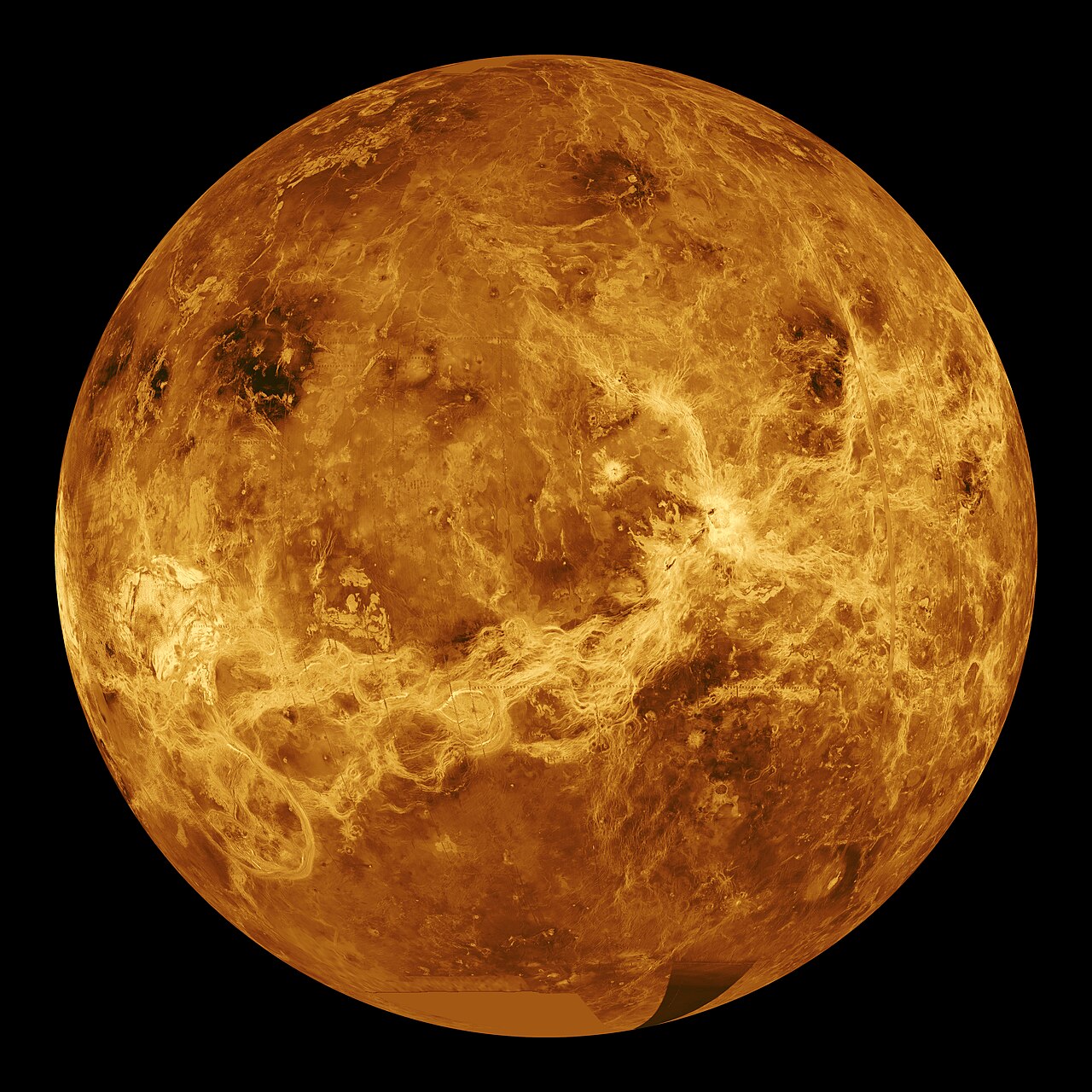Venus may have had a shallow liquid-water ocean and habitable surface temperatures for up to 2 billion years of its early history, according to computer modeling of the planet’s ancient climate by scientists at NASA’s Goddard Institute for Space Studies (GISS) in New York.
Second planet from the Sun and our closest planetary neighbor, Venus is similar in structure and size to Earth, but it is now a very different world. Venus spins slowly in the opposite direction most planets do. Its thick atmosphere traps heat in a runaway greenhouse effect, making it the hottest planet in our solar system—with surface temperatures hot enough to melt lead. Glimpses below the clouds reveal volcanoes and deformed mountains.
10 Things to Know About Venus
1
EARTH-SIZED
If the sun were as tall as a typical front door, the Earth and Venus would each be about the size of a nickel.
2
SECOND ROCK
Venus orbits our Sun, a star. Venus is the second closest planet to the sun at a distance of about 67 million miles (108 million km).
3
A DAY LONGER THAN A YEAR
One day on Venus lasts 243 Earth days because Venus spins backwards, with its sun rising in the west and setting in the east.HASING CLOUDS ON VENUS
4
DIVERSE TERRAIN
Venus' solid surface is a volcanic landscape covered with extensive plains featuring high volcanic mountains and vast ridged plateaus.
5
MOONLESS AND RINGLESS
Venus has no moons and no rings.
6
GREENHOUSE EFFECT
The planet’s surface temperature is about 900 degrees Fahrenheit (465 degrees Celsius)—hot enough to melt lead.
7
WATER ON VENUS
Many scientists believe water once existed on the surface. Future Venus explorers will search for evidence of an ancient ocean.
8
MANY VISITORS
More than 40 spacecraft have explored Venus. The ‘90s Magellan mission mapped the planet's surface and Akatsuki is currently orbiting Venus.
9
LIFE ON VENUS
Venus’ extreme temperatures and acidic clouds make it an unlikely place for life as we know it.
10
SUPER ROTATING ATMOSPHERE
While the surface rotates slowly, the winds blow at hurricane force, sending clouds completely around the planet every five days.



